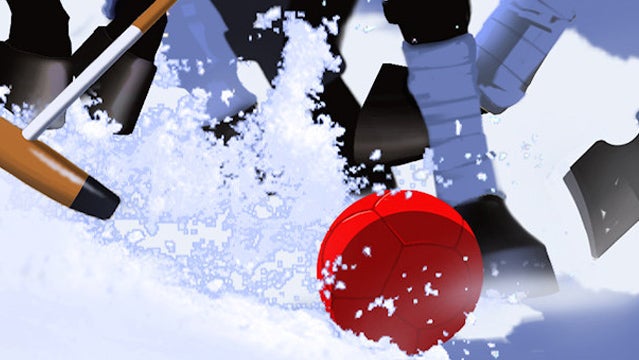You bet, although тАЬit’s an exhibition type of thingтАФthere are only a few tournaments a year in a couple of different places,тАЭ explains Pam Gleason, editor and publisher of The Aiken Horse. тАЬThe snow polo tradition is definitely growing, but it isn’t something that anyone considers their primary sport; they are polo players who try snow polo as a lark.тАЭ
HereтАЩs some background: Snow poloтАФa modified version of regular poloтАФwas officially introduced in 1985 in St. Moritz, Switzerland, but itтАЩs also quite popular in Aspen, Colorado. In fact, in 2012, the Roaring Fork Valley was home to the 13th annual USPA World Snow Polo Championship, the only snow polo tournament sanctioned by the United States Polo Association.
Barry Stout, local rancher and founder of the Roaring Fork Polo Club, helped organize the event, which is held annually on a small, snow-packed arena. тАЬYou have to condition the horses to running in the snow,тАЭ he told the Aspen Times. тАЬThey need to get used to the movement of breaking through the snow surface, sort of like post-holing. We work the horses in the snow to get them accustomed to that feeling and to build up their tendons.тАЭ
Special horseshoes also help; cogs create traction, and a rubber lining around the inside prevents slow clumping. HorsesтАЩ ankles are wrapped with fleece bandages and tendon boots to protect them from injuries, which often result from tight turns in the small field. Special care is taken off the pitch, too. тАЬWe use sweat sheetsтАФnot blanketsтАФto put on a hot horse coming off the field,тАЭ Stout explains. тАЬThe lighter sheets let the horses cool down slowly, instead of keeping them hot and sweaty the way normal winter horse blankets would.тАЭ
The grapefruit-sized ball is also designed for snow play; its bright red color makes it easy to see, butтАФbecause itтАЩs lightweight, inflatable vinyl rather than hard plasticтАФitтАЩs less predictable than a standard polo ball. Games consist of four 7 1/2-minute chukkers, or periods. Players (three per team) change horses after each one. Like normal polo, the basic idea is for Team A to drive the ball down the field and into Team BтАЩs goal, using mallets.
Curious for more? The is this weekend (January 24-27) on the frozen Lake St. Moritz. Five thousand miles east, the 2013 Fortune Heights takes place January 25 to February 3 at the Tianjin Goldin Metropolitan Polo Club in China. Twelve nations, including the U.S., will participate in the International Federation of Polo event.
If you canтАЩt make it to China or Switzerland, check out some of the action on . Tally ho!


